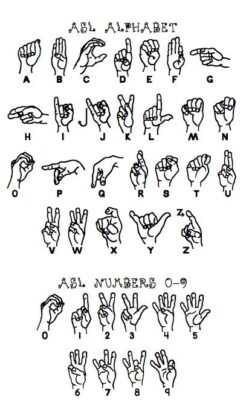According to the World Health Organisation report on hearing, just over 5% of the population (430 million people) live with hearing loss that is considered ‘disabling’. People who have disabling hearing problems face an array of challenges throughout their lives.
78% of deaf children currently attend a mainstream school with absolutely no specialist help provided, while the few specialist schools available come at a significant financial cost. Social prospects also become incredibly limited as few people know how to sign; within the UK, only 151 000 people can sign which includes the 81,000 who are completely deaf. This inability to communicate widely can cause deaf people of all ages to become alienated and isolated from their peers. Employment rates are depleted (about 65% of working age citizens with hearing problems are in employment, compared with 79% of the total working population) and jobs are more likely to be in unskilled labour, so the earning potential is reduced and often quality of life drops significantly. This proves that the education system and employment market fails to meet many specialist needs.
What are seen as quick fixes to these communication issues have limited sustainability in the long term: the lip reading deaf are unable to understand more than 30% of spoken English, and require a good view of peoples’ faces, which becomes challenging in group settings. Using a pen and paper also takes significantly longer than signing or speaking. This discourages people to join in with conversations as they cannot fit in to the flow of the dialogue.
Sign Language presents a much more efficient solution. Sign Language can be learnt equally as easily by all people, whether born deaf or not, and incorporates all words of the English Language acting more efficiently than pen and paper.
As the world gets louder due to various environmental factors, and the percentage of hearing problems is set to increase over the next few decades, it is crucial to consider the relevance and advantages of making BSL a mandatory curriculum subject in schools, as it seems to represent the best way to integrate deaf people in socially with the rest of society.


The recent push for inclusivity amongst those with disabilities can be partially satisfied with the inclusion of sign language within schools, removing a huge communication divide and giving those with hearing problems the option for a more dynamic social life. BSGD makes at least 2 foreign languages mandatory on the school curriculum from Year 7 to Year 9, however the languages dropped by a student are likely to be almost completely forgotten by the student.I consider the reasoning for this is that we don’t have real circumstances in which to speak these languages. While foreign languages are valuable to learn, of equal value might be learning BSL. In primary schools and nurseries, teachers who speak and sign at the same time are forced to consider ways they can explain things more simplistically and will also slow down the rate of speech to communicate simultaneously; the more considered and slower teaching style can be beneficial for all children.
Sign language holds advantages for those with hearing problems, but also for other groups such as infant children. As an alternate method of communication, babies will start producing their own signs (if taught) around the same age or earlier as they would say their first word. Studies have found that many kids have had boosted confidence through sign language to express their needs and wants; and is especially useful for the many children who have speech issues in early years. Sign language is also found to expand the vocabulary and grammar skills of speech, as children have multiple perspectives of how communication is formed.
Even if only 1 in 10 people pick up sign language at the GCSE level through school, this would be a massive increase from the current 0.2% signing population. This can allow for communication in groups as one person and sign and translate for deaf people on behalf of a whole group, even if most of them don’t understand sign language.
If sign language becomes a component throughout people’s years in school, this could massively increase people’s vocabulary skills as well as other educational skills, giving them life-long skills as well as an additional language. I believe that sign language is the best way to tackle the predicted increase of hearing and other educational problems, and to promote more inclusivity for everyone from an early age.
Happy holidays! -Suzanna Simmonite
